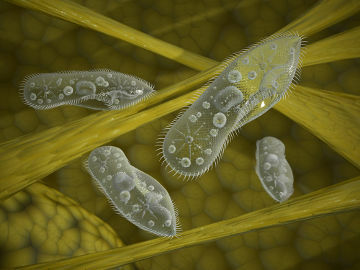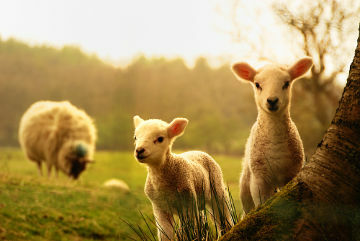Since Antiquity, different ways of classifying living beings have been proposed in order to facilitate the study of these organisms and to understand their evolutionary relationships. The criteria used to group them are varied, which makes these systems are constantly modified and improved.
The first classification systems were quite simple and, as technological resources were scarce, they were based on the macroscopic characteristics of each being and their habits of life. For this reason, organisms were initially classified by Linnaeus into two kingdoms: Animal and Vegetable.

Protozoa are part of the Protoctist kingdom
With the advancement of technology, the study of microscopic beings began and, with that, a new classification emerged. In 1866, the term protist was proposed to designate eukaryotic organisms that did not fit into the Animal and Plant kingdoms. Years later the protists were promoted to kingdoms.
Copeland, in 1956, suggested the creation of a kingdom to group organisms that could be considered as the simplest in nature: bacteria. Then came the system of four kingdoms, as well as the
Kingdom Monera, where the prokaryotic beings were inserted.
Fungi are part of the Fungi kingdom
Later, in 1969, the five-kingdom system proposed by Whittakea. Without a doubt, this is the most used system, although there are other classifications. According to Whittaker's system, we have the kingdoms: Monera, Protista, Fungi, Animalia and Plantae.
→ Kingdom of Monera: It groups prokaryotic unicellular organisms, that is, they have only one cell without a nucleus bounded by a membrane. Examples: Bacteria and cyanobacteria.
→ Protist Kingdom (Currently called Protoctist): It brings together unicellular and multicellular beings, eukaryotic, autotrophic or heterotrophic. Example: algae and protozoa.
The name change from Protist Kingdom to Protoctist occurred in the 1980s and was proposed by Margulis and Schwartz. In addition to changing the names, the researchers included in this group the multicellular algae and some fungi.
→ Kingdom Fungi: It groups eukaryotic beings, which are mostly multicellular, and heterotrophic. Examples: Mushrooms, molds and yeasts.

Plants are part of the Plantae kingdom
→ Kingdom Plantae or Metaphyta: Encompasses eukaryotic, multicellular and autotrophically nourished organisms. Example: Mosses, ferns, araucarias and mango trees.
→ Kingdom Animalia or Metazoa: Includes eukaryotic, heterotrophic, and heterotrophically nutritious organisms. Example: Man, dog, cow and birds.

Animals are part of the Animalia kingdom
In addition to this classification, it is currently accepted that all organisms are included in three major domains: Bacteria, Archaea and Eukarya. This classification was proposed by Carl Woese in 1990 and created using data from ribosomal RNA nucleotide analysis.
the domain Bacterium groups all true bacteria or simply bacteria. the domain archaeae includes all archaea, which were previously erroneously regarded as the basal group of bacteria. the domain Eukarya, in turn, it is composed of all existing eukaryotic organisms, being included in this group, therefore, the kingdoms Protoctist, Fungi, Plantae and Animalia.
As textbooks and most teachers still adopt the classification proposed by Whittaker, here you will find texts that follow this system.
Good studies!
Heads up: Viruses are a very peculiar group due to the absence of cells. Hence, they are not classified within the realms of living beings. It is noteworthy that these organisms are unable to live without a cell, being considered mandatory intracellular parasites.
By Ma. Vanessa dos Santos
